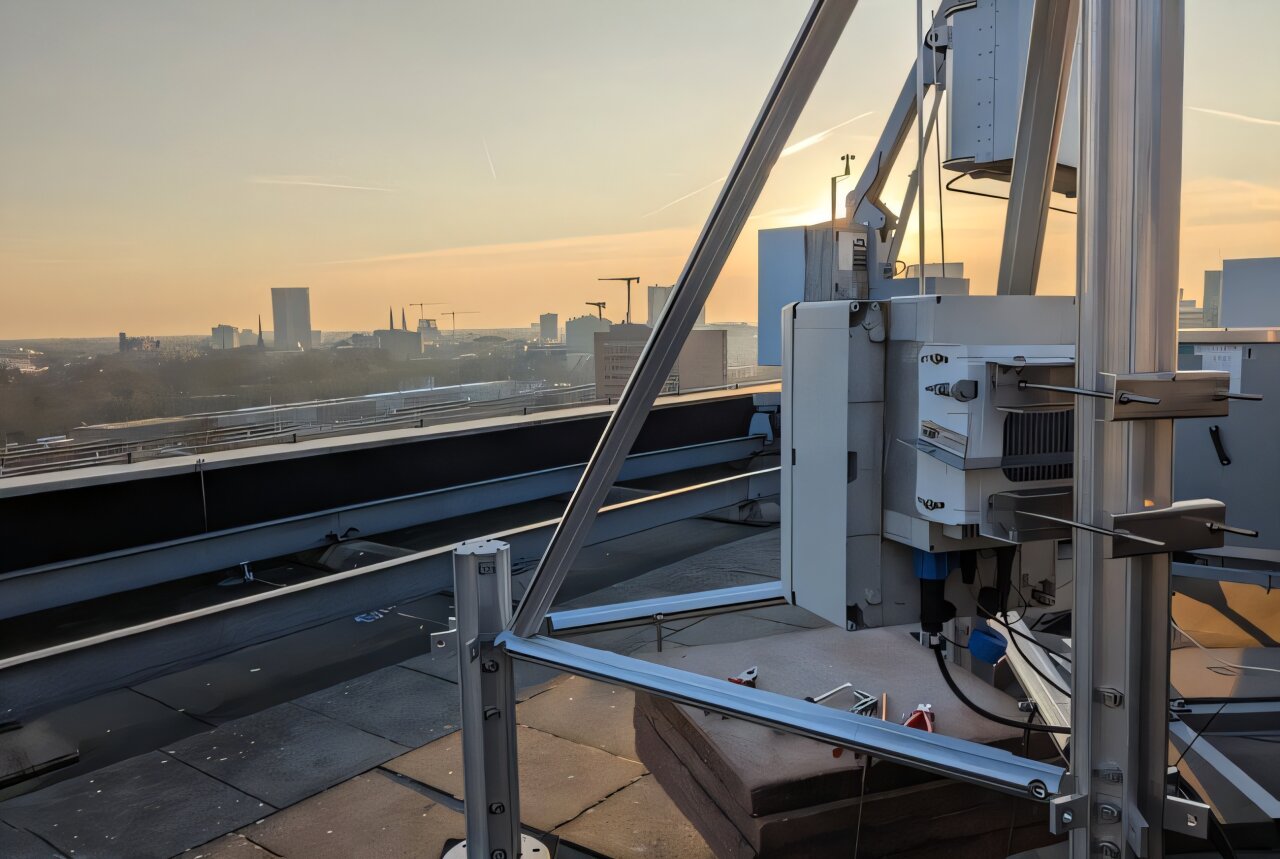Eindhoven researchers achieve 5.7 Tb/s data transfer speeds using highly focused infrared light
Free-space optical tech shows promise for ultra-fast wireless connectivity

Researchers at Eindhoven University of Technology (TU/e) have demonstrated a high-speed wireless data transmission of 5.7 Tb/s (Terabits per second) across a distance of 4.6 kilometers (2.85 miles) using invisible infrared light beams. This achievement is said to represent the highest data rate recorded for wireless communication over such a distance in an urban setting.
The high-speed connection was established between the TU/e campus in the north and the High Tech Campus (HTC) in the south of Eindhoven. Utilizing advanced optical antennas developed by Aircision, a local telecommunications equipment supplier, the system employs free-space optical (FSO) communication. This technique transmits data through focused infrared beams, offering ultra-fast, interference-free wireless communication without relying on traditional cables or radio signals.
Infrared data transmission comes with some notable limitations, such as the requirement for a clear line of sight, a relatively short range, and vulnerability to environmental factors. These challenges make it less ideal for long-distance communication or use in environments where consistent, reliable connectivity is needed, especially when compared to other wireless technologies.
Vincent van Vliet, a Ph.D. researcher at TU/e involved in the project, highlighted the significance of this advancement, "Infrared wireless communication combines the high data speeds known from optical fibers with the flexibility of wireless communication systems. By complementing existing wireless and fiber-optic technologies, we can build the densely interconnected networks required to bring high-speed data connectivity to every corner of the planet."
The achievement was made possible using the Reid Photonloop testbed, a permanent setup launched by TU/e to experiment with high-speed wireless communication. This system integrates high-end technology that combines multiple wavelengths in a single transmission. This method is commonly used in fiber optics but applied here for the first time at this scale in wireless FSO communication. The highly focused nature of the transmitted infrared light allows for numerous communication links to coexist without any potential interference.
According to Chigo Okonkwo, Associate Professor and head of TU/e's High-Capacity Optical Transmission Lab, the testbed will help in refining high-speed wireless communication and optimize its reliability and availability in all weather conditions.
Aircision is reportedly exploring practical uses for the technology, including wirelessly linking new 5G or 6G antennas to existing networks—particularly in locations where installing fiber infrastructure is difficult or prohibitively expensive.
Get Tom's Hardware's best news and in-depth reviews, straight to your inbox.

Kunal Khullar is a contributing writer at Tom’s Hardware. He is a long time technology journalist and reviewer specializing in PC components and peripherals, and welcomes any and every question around building a PC.